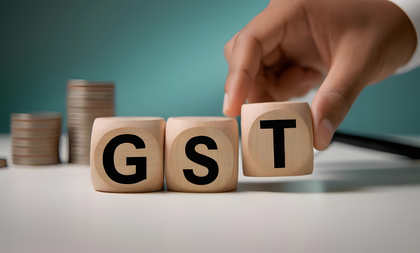GST reforms to increase disposable income of consumers: Expert
By IANS | Updated: August 16, 2025 11:55 IST2025-08-16T11:47:08+5:302025-08-16T11:55:04+5:30
New Delhi, Aug 16 The government's plan to overhaul the Goods and Services Tax (GST) structure will give ...

GST reforms to increase disposable income of consumers: Expert
New Delhi, Aug 16 The government's plan to overhaul the Goods and Services Tax (GST) structure will give Indian consumers more disposable income, potentially boosting demand and overall consumption in the economy, said Najib Shah, former Chairman of the Central Board of Excise and Customs (CBEC) on Saturday.
The Central government has mulled reducing the current four-slab structure into two primary rates -- 5 per cent and 18 per cent -- while introducing a special 40 per cent slab for luxury and sin goods.
The proposal came after Prime Minister Narendra Modi, during his Independence Day address from the Red Fort, said that the next generation reforms in GST will be unveiled by Diwali, which will provide "substantial" tax relief to the common man and benefit small businesses.
In an interaction with IANS, Najib Shah suggested that “current slabs could be merged into new slabs -- 5 per cent slab with 12 per cent slab merged into a middle slab of roughly 7-8 per cent”.
“The 12 per cent with 18 per cent can be merged into a 15-16 per cent slab, and the 28 per cent rate possibly moving to 30 per cent once the cess is removed in March 2026,” he added.
Shah said that the reduced multiplicity of rates and lower tax slabs should leave more disposable income with consumers, potentially boosting demand and overall consumption in the economy.
The expert noted that “GST reforms should lead to lower prices, smoother credit flow, resolution of tax inversion issues, and reduced disputes, ultimately cutting costs for producers and consumers alike”.
Government collections should not be adversely affected while still offering relief to consumers.
Further, small and medium enterprises stand to gain significantly from simplified tax rates, lower compliance burdens, and improved access to seamless credit within the GST framework.
Calling the GST reforms “long overdue”, Shah told IANS that he sees them as “a transformative step that will strengthen the tax system, stimulate growth, and reinforce India’s position as a prime investment destination”.
As per the government proposal, likely, around 99 per cent of items currently taxed at 12 per cent are expected to shift to the 5 per cent bracket, while 90 per cent of goods in the 28 per cent slab, including white goods, will move to 18 per cent.
"Finalising these new rates will require crucial GST Council meetings, followed by GST Network readiness to ensure smooth and seamless execution nationwide," Shah said.
Shah also exuded optimism at S&P’s and RBI's positive outlook on India’s stable GDP growth projection of 6.5 per cent, the highest among major economies.
"While US tariffs could affect certain labour-intensive exports, their overall impact on GDP will be minimal as exports to the US constitute only about 2 per cent of India’s economy," he told IANS.
India must seek alternative export destinations and enhance competitiveness to offset any impact from US tariffs, supported by targeted policy measures. India’s multiple FTAs and CEPAs -- UK already finalised and EU nearing completion -- will not only reduce trade barriers but also attract significant foreign investment, he noted.
Disclaimer: This post has been auto-published from an agency feed without any modifications to the text and has not been reviewed by an editor
Open in app